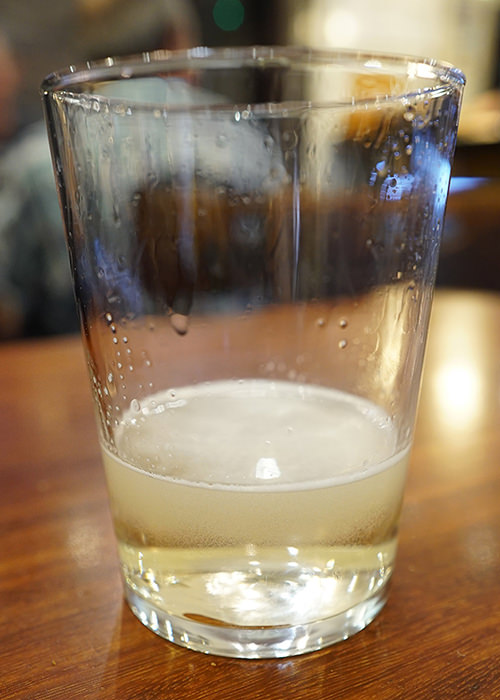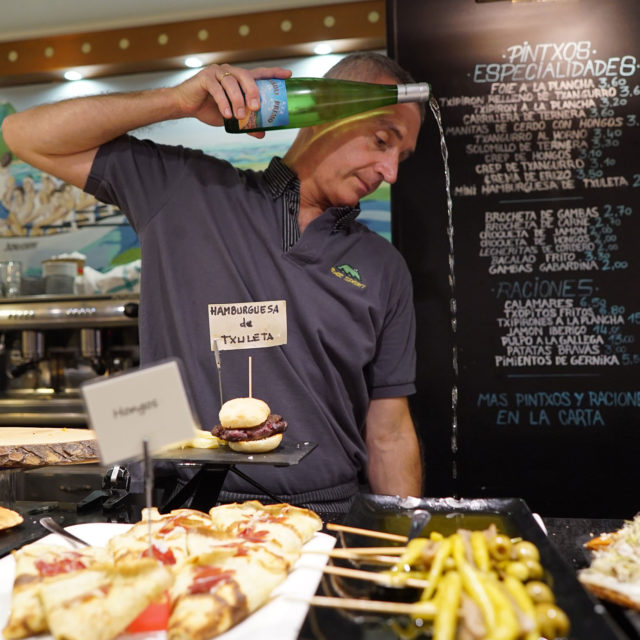Txakoli “has always been considered an aperitive and social wine,” Eli Susperregui, culinary guide at Mimo San Sebastián, tells VinePair. “That’s why it goes good with pintxos,” or the tapas served in the Basque Country, Navarra, and beyond.
Txakoli, interchangeably called Txakolina, is a primarily white wine produced in northwestern Spain’s Getaria region, along the coast of the Bay of Biscay, bordering France. The recent establishment of denominaciónes de origen, or D.O.s, has helped fuel the local wine’s success. It’s also food-friendly, refreshing, and especially suitable for summer.
Now, from Michelin-starred establishments in San Sebastián, to clubby restaurants and trendy bars in NYC, Txakoli’s broad appeal is celebrated among chefs, sommeliers, and wine drinkers. It wasn’t always this way.
“It is only recently [that] Txakoli has been more considered as a wine to accompany a meal,” Susperregui says. Previously, she says, it “had a bad reputation as being a very acidic and bad wine.”
Ernesto Txueka, whose family owns the largest producer of Txakoli, Txomin Etxaniz, says there were only 14 hectares, or about 35 acres of vines in his region in the 1980s.“Today we have 33 wineries and about 400 hectares [988 acres] of vineyards creating Txakoli,” he told Wine Spectator in 2018.
This is due to improved production methods, such as training vines high off the ground, to avoid the moisture from frequent rains. “The grapes have to see the vista,” Txueka says.
These coastal views may sound serene, but vineyards’ proximity to the ocean actually puts a strain on grapevines, which struggle against the cold, wind, and year-round rainfall. On the bright side, this contributes to the wine’s tart, highly acidic, invigorating flavor.
Txakoli can be made with two grapes, Hondarrabi Zuri, a white grape; and Hondarrabi Beltza, a red grape. Most Txakoli is white, with an almost green tint and a fresh, tart, lemony flavor. Red and rosé are much less common, and the latter is produced primarily for the American market.

The three D.O.s for Txakoli are Getariako Txakolina, Bizkaiko Txakolina, and the much smaller Arabako Txakolina. Getariako Txakolina, where a majority of Txakoli is made, is located west of San Sebastián, a culinary city famed for its fresh, local food. Here, Txakoli is served almost invariably with pintxos, or tapas, placed across the bar, similar to a buffet.
Small plates span seasonal seafood like squid and crab, to salty ham croquettes, to blistered green chili peppers. The Gilda, a combination of anchovies, Guindilla peppers, and two olives stacked on toothpicks, is “the first pintxo ever made in San Sebastián,” Susperregui says, and is swallowed in one bite.
Txakoli wines are “simple, they’re fresh, they’re easy, [and] people are starved for something like that,” André Tamers, of De Maison Selections, the leading U.S. importer of Txakoli, told The New York Times in 2010.
“My favorite low-alcohol wines are Txakolis!” Gretchen Thomas, sommelier and VP of beverage at Del Frisco’s Grille, Nationwide told VinePair in March 2019. “The alcohol never goes higher than 11.5 percent, and the wines from the Getariako region of Txakoli tend to have a little spritz, which can be fun and balance the dryness and acidity.”
Txakoli is served in a short, squat glass, similar to a tumbler or rocks glass, about one-third full. It’s called a txiketeo, meaning “a small glass of wine.”
Also essential to the Txakoli experience is its showy, but necessary pour: Bartenders hold the bottle at or above ear-level, allowing a thin stream of shimmering liquid to flow from bottle to glass. This aerates the wine, helping provide Txakoli’s famous froth. Too high or too low, and the delicate carbonation is lost.
5 TXAKOLI WINES TO TRY
Salty and frothy as the sea itself, invigorating, easy-drinking Txakoli deserves a place at summertime tables. Here are five white and rosé versions we recommend.
